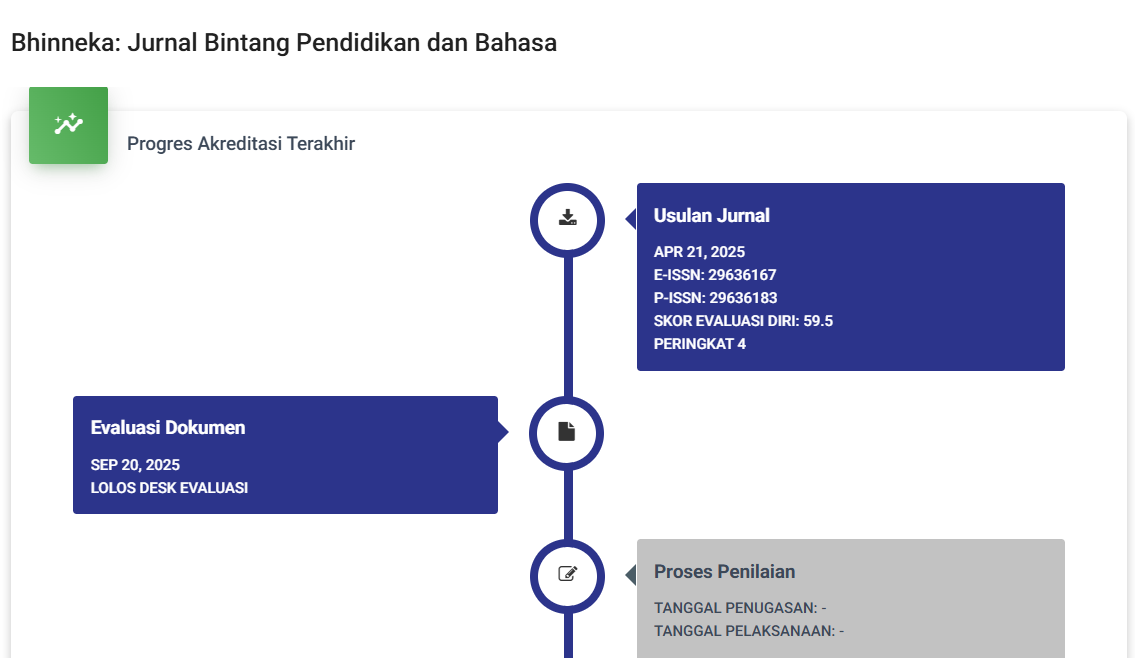Penggunaan Alat Peraga Sistem Eskresi Siswa Kelas 4 di Mi Al- Barokah An-Nur
DOI:
https://doi.org/10.59024/bhinneka.v3i3.1519Keywords:
Teaching aids, excretory system, visual media, science learningAbstract
The purpose of this study is to examine how fourth-grade students at MI Al Barokah An Nur Jember use teaching aids to learn about the excretory system. A qualitative descriptive method was used, with data collected through observation, interviews, and documentation. The results of the study show that teaching aids are crucial in helping students understand the components of the excretory system in more detail. The tools used include replicas of human excretory organs, such as the kidneys and lungs. Teaching aids serve as visual media used by teachers to attract students' attention and enhance their engagement in the learning process. They also stimulate students' motivation to learn and assist them in retaining the concepts being taught. Therefore, teaching aids have proven to be beneficial in supporting science learning in the fourth grade at MI Al Barokah An Nur Jember.
References
Ahmad, T., & Prasetya, A. (2021). Pengaruh media visual terhadap pemahaman konsep IPA siswa SD. Jurnal Pendidikan Dasar, 12(3), 112–120.
Arsyad, A. (2014). Media pembelajaran (hlm. 28). RajaGrafindo Persada.
Cheng, Y., Wang, T., & Lee, H. (2020). Multimedia-based instruction and its effects on science conceptual understanding in elementary students. International Journal of Instruction, 13(4), 357–372.
Chi, M. T. H. (2009). Active-constructive-interactive: A conceptual framework for differentiating learning activities. Topics in Cognitive Science, 1(1), 73–105.
Hall, J. E., & Guyton, A. C. (2021). Textbook of medical physiology (14th ed.). Elsevier.
Kim, S., Lee, J., & Choi, Y. (2021). Visual-based learning in elementary science education: Effects on learning achievement and motivation. Journal of Science Education and Technology, 30(2), 145–158.
Mayer, R. E. (2017). Multimedia learning (2nd ed.). Cambridge University Press.
Moreno, R., & Mayer, R. E. (2019). Interactive multimodal learning environments: Special issue on multimedia learning. Educational Psychology Review, 31(3), 789–810.
Oliveira, R., & Silva, M. T. (2022). Enhancing science education in primary schools using visual and dialogical learning. Science Education Review, 21(1), 65–78.
Putri, D. A., Lestari, W., & Nugroho, S. (2021). Analisis miskonsepsi IPA materi sistem ekskresi siswa sekolah dasar. Jurnal Penelitian Pendidikan, 18(2), 203–210.
Rachmawati, H., & Setyawan, A. (2022). Strategi guru dalam mengatasi kesulitan belajar IPA di sekolah dasar. Jurnal Ilmiah Pendidikan Guru Sekolah Dasar, 9(1), 77–85.
Tzeng, J. Y., Lee, H. S., & Chen, C. Y. (2021). The role of visual media in children's science concept development: A longitudinal study. Early Childhood Research Quarterly, 55, 23–34.
Downloads
Published
How to Cite
Issue
Section
License
Copyright (c) 2025 Bhinneka: Jurnal Bintang Pendidikan dan Bahasa

This work is licensed under a Creative Commons Attribution-ShareAlike 4.0 International License.








